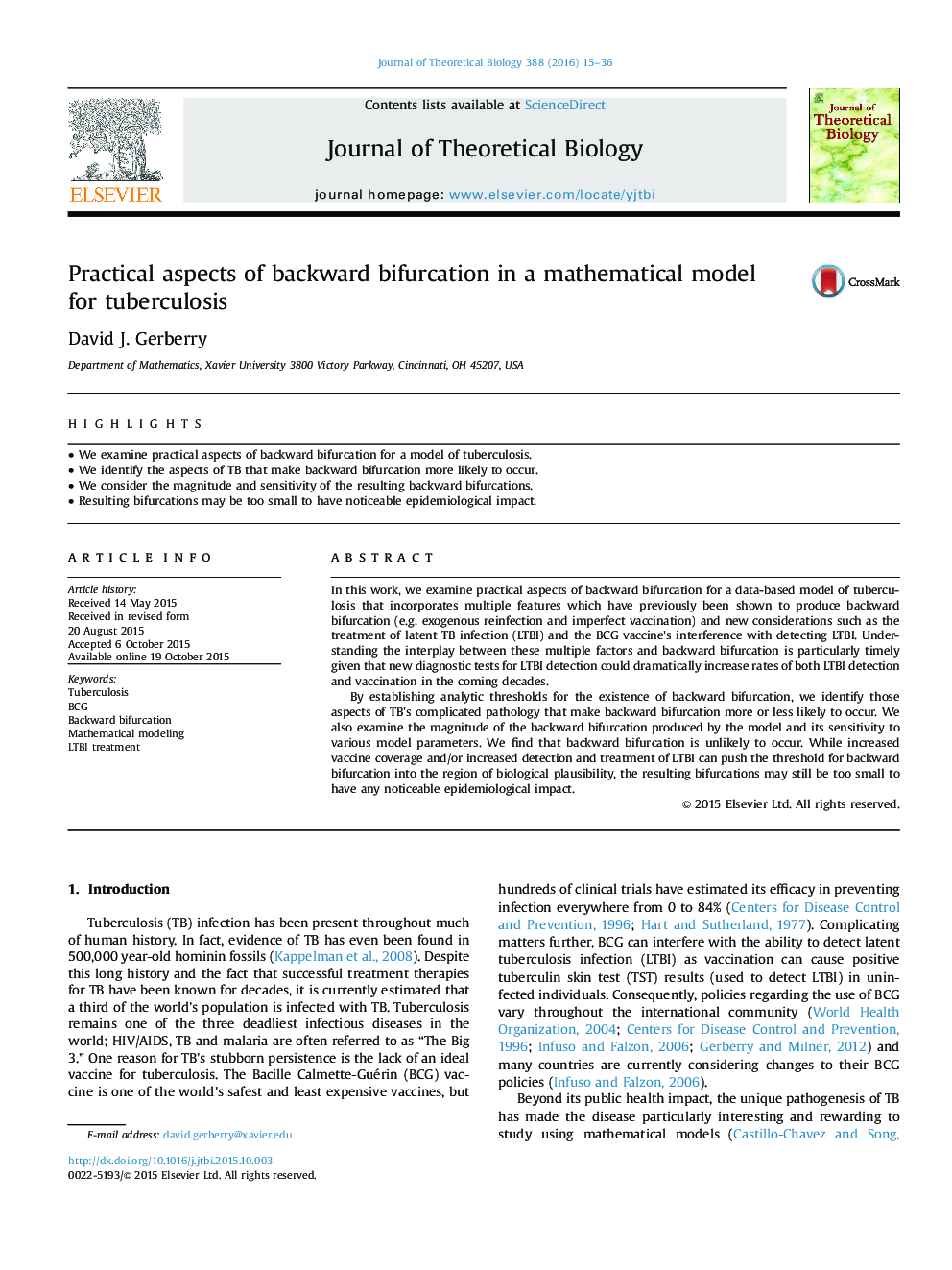| Article ID | Journal | Published Year | Pages | File Type |
|---|---|---|---|---|
| 4495992 | Journal of Theoretical Biology | 2016 | 22 Pages |
•We examine practical aspects of backward bifurcation for a model of tuberculosis.•We identify the aspects of TB that make backward bifurcation more likely to occur.•We consider the magnitude and sensitivity of the resulting backward bifurcations.•Resulting bifurcations may be too small to have noticeable epidemiological impact.
In this work, we examine practical aspects of backward bifurcation for a data-based model of tuberculosis that incorporates multiple features which have previously been shown to produce backward bifurcation (e.g. exogenous reinfection and imperfect vaccination) and new considerations such as the treatment of latent TB infection (LTBI) and the BCG vaccine׳s interference with detecting LTBI. Understanding the interplay between these multiple factors and backward bifurcation is particularly timely given that new diagnostic tests for LTBI detection could dramatically increase rates of both LTBI detection and vaccination in the coming decades.By establishing analytic thresholds for the existence of backward bifurcation, we identify those aspects of TB׳s complicated pathology that make backward bifurcation more or less likely to occur. We also examine the magnitude of the backward bifurcation produced by the model and its sensitivity to various model parameters. We find that backward bifurcation is unlikely to occur. While increased vaccine coverage and/or increased detection and treatment of LTBI can push the threshold for backward bifurcation into the region of biological plausibility, the resulting bifurcations may still be too small to have any noticeable epidemiological impact.
